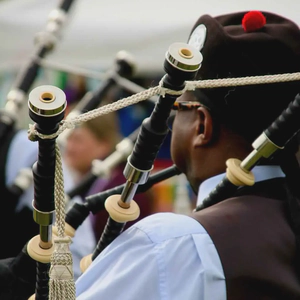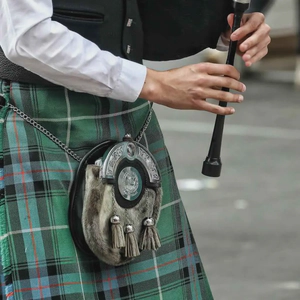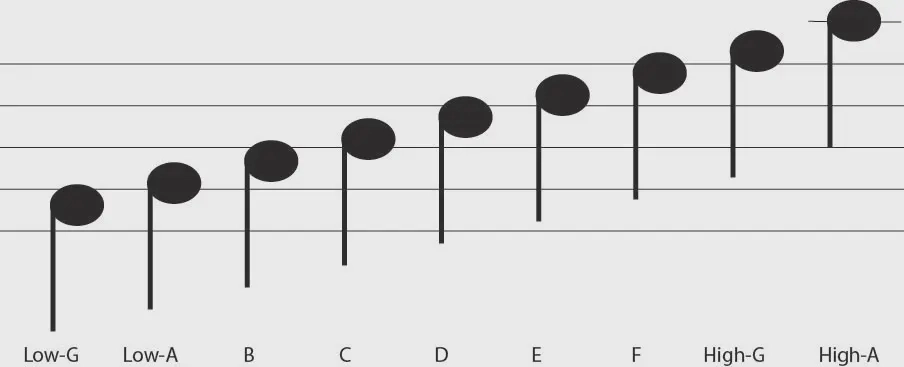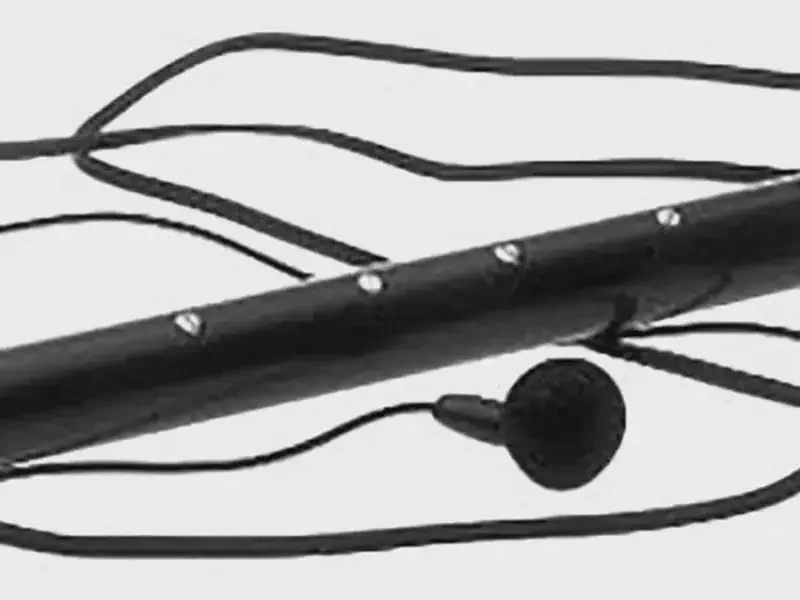
Table of Contents
The practice chanter is an essential tool for anyone learning to play the bagpipes.
It is a simplified version of the bagpipe chanter and is used for practice and instruction purposes. Here’s an overview of the practice chanter, highlighting its features, uses, and importance in learning the bagpipes:

Design and Features
- Structure: The practice chanter comprises a long, narrow tube with finger holes. It has a mouthpiece at one end and a reed at the other, similar to the pipe chanter but without the need for the full bagpipe setup.
- Material: Practice chanters are commonly made from plastic or wood. Plastic chanters are durable and less affected by humidity, making them ideal for beginners, while wooden chanters offer a more traditional feel and sound quality.
- Reed: Practice chanters use a single reed, which is typically made from plastic. This reed is less complex than the double reed found in a full bagpipe chanter, making it easier to play and maintain.

Uses
- Learning Finger Placement and Technique: The practice chanter allows students to learn the finger placements and movements required to play bagpipe melodies without managing the bag and drones.
- Music Practice: It is used to practice tunes, scales, and exercises. Because it is quieter than a full set of bagpipes, it is suitable for indoor use, enabling frequent practice without disturbing others.
- Transition to Bagpipes: Once comfortable with the practice chanter, students can transition more easily to the full bagpipes, having already mastered the fingerwork needed to play melodies.

Importance in Learning
- Accessibility: The practice chanter is more affordable and portable than a full set of bagpipes, making it accessible for beginners to start learning.
- Skill Development: It helps in developing essential skills such as finger dexterity, timing, and tune memorization, which are crucial for playing the bagpipes effectively.
- Sound Production: Learning to produce a consistent sound and manage breath control on the practice chanter lays the foundation for managing the air supply to the bag when playing the full instrument.

Types
- Standard Practice Chanter: Suitable for beginners, it is shorter and designed for basic practice.
- Long Practice Chanter: Mimics the length and feel of a full bagpipe chanter more closely, beneficial for advanced students preparing to transition to the bagpipes.
In summary, the practice chanter is a fundamental learning tool for aspiring bagpipers, offering a practical and efficient way to master the art of bagpipe playing before taking on the full instrument. Its simplicity, affordability, and effectiveness in teaching the basics of bagpipe music make it an indispensable part of bagpipe education.
Tags:
Related Posts

practice chanter
- June 6, 2022
- Practice chanter
It is used by beginning pipers to learn basic notes and movements before adding the complication of a bag and drones.